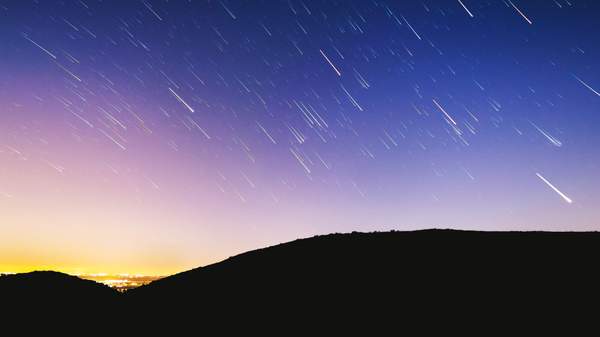Overview
Eyes to the sky, Australia — it's time to catch one of the year's most impressive meteor showers. Each autumn Down Under, the Eta Aquarids meteor shower sets the sky ablaze. And yes, it's happening right now.
This vibrant astronomical vision starts in April every year, but is at its peak in early May. In 2023, that suits stargazers nicely. Last month was all about not looking directly at the solar eclipse, so now it's the night sky's turn to shine again.
The best date to mark in your diary: the early hours of Sunday, May 7, which is when the shower will be at its most spectacular. If you're eager to catch a glimpse, even from just your backyard or balcony, here's what you need to know.
WHAT IS IT
The Eta Aquarids might not be as famous as Halley's Comet, but the shower is actually a distant relation — because the bits and pieces you see flying around were on Halley's path a really, really long time ago. And, rather than only being visible every 76 years (the next Halley's Comet sighting is in 2061), the Eta Aquarids come around every year, usually between April 19–May 28 every year. The shower's name comes from the star from which they appear to come Eta Aquarii, which is part of the Aquarius constellation. So, that's what you'll be looking for in the sky.
Luckily, being in the southern hemisphere, we get some of the best views in the world. On average, you can see up to 20–40 meteors per hour.
WHEN TO SEE IT
The shower will reach a peak in the early morning of Sunday, May 7, but will still be able to be seen for a few days on either side. The best time to catch an eyeful is just before dawn after the moon has set, so around 4am — but between 2am–7am is also recommended.
At that time, you'll be in the running to see as many as 50 meteors every 60 minutes. Each will be moving at about 225,000 kilometres per hour, shining extraordinarily brightly and leaving a long wake. The shower's cause is, essentially, the Earth getting in the comet's way, causing stardust to fry up in the atmosphere.
HOW TO SEE IT
Usually, when a meteor shower lights up the sky, we'd tell city-dwellers to get as far away from light pollution as possible to get the best view. If you can't venture out of town at the moment, you can still take a gander from your backyard or balcony.
To help locate the shower, we recommend downloading the Sky Map app — it's the easiest way to navigate the night sky (and is a lot of fun to use even on a non-meteor shower night). If you're more into specifics, Time and Date also has a table that shows the direction and altitude of the Eta Aquarids. It has been updating this daily.
The weather might get in the way of your viewing, though, depending on where you live. Melbourne is set for showers until next Tuesday, and Adelaide is as well on and off until Monday — although Sunday's forecast is just partly cloudy. There's also expected to be a shower or two in Perth from Saturday onwards, and showers are also meant to start in Sydney on Sunday. In Brisbane, however, mostly sunny conditions await.
